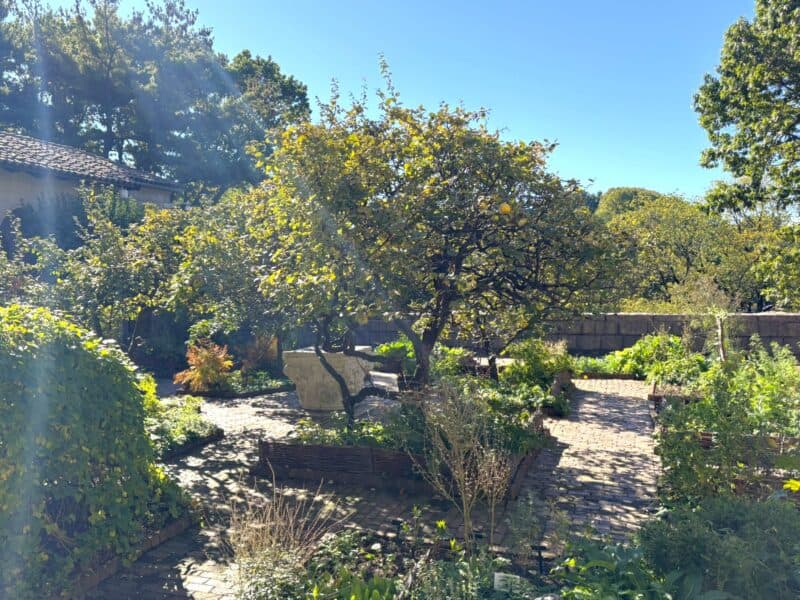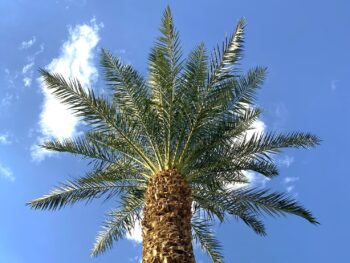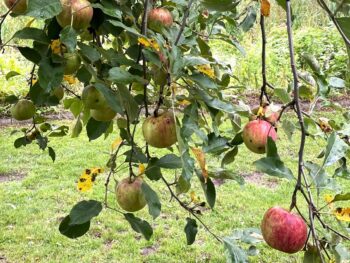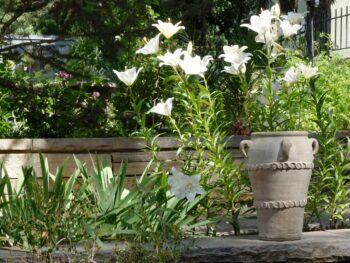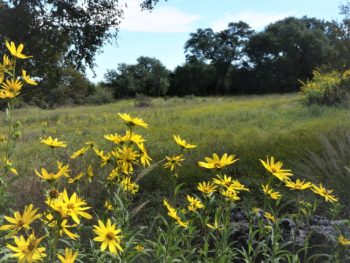While commotion and honking clamor are the expected atmosphere of America’s most iconic urban landscape, come with me to spy on a luxuriously quaint garden sanctuary in New York City. O Bible gardeners, we have much to see! The garden staff at The Met Cloisters works diligently to cultivate and conserve specimens once grown in medieval gardens, which naturally showcases many plants of the Bible. In fact, over 35 species from Scripture populate the precious beds across select garden cloisters, with a few related thistles, various lilies and wormwoods, and mock myrrh plants to round out the offering. This sheltered spot is a must-see in America’s Bible Gardens listing!
Mirroring the exquisite art and architectural collections on display from the Middle Ages at this outpost of The Metropolitan Museum of Art, horticulturists have thoughtfully crafted beautiful, soothing garden spaces well worth the subway adventure to reach them. Be prepared to press “pause” on life’s flurries and the rushing sound of the rails to sequester at this sheltered feast of garden herbs and flowery delight, a truly cloistered setting. Selah.
The Met Cloisters opened 87 years ago, a mighty fortress perched on a pinnacle of Fort Tyron Park, overlooking the Hudson River. Surrounded in massive Romanesque stonework rest three garden spaces, all sized similarly to backyard gardens, which translate to plenty of take-aways and how-to’s for home. Additionally, an interior atrium is filled with potted greenery and more Biblical scenery.
Garden Greeting

The Judy Black Garden greets with a tranquil fountain, its grace-paced trickle matched in billowy flower stalks flowing over foursquare, symmetrical beds. Like a gesture of God’s Word, this garden seems to beckon from around the corner of the admissions area…
You are an enclosed garden, my sister, my promised bride; you are a garden that is locked, a fountain that is sealed. Song of Songs 4:12 NCB
…drawing visitors into garden rhythms, leaving behind the haste of city hustle. Gentle breezes stir foliage and flowers, setting the stage with unruffled reverie for the verdant visit to unfold. From the pages of Scripture, see acanthus (Job 30:7), crab apple (Proverbs 25:11), maidenhair fern (Song of Songs 1:16), bronze fennel (Isaiah 28:25), and ornamental alliums (similar to Numbers 11:5) in this garden room.

Lower Gardens
Moving back inside, the garden way descends through the Gothic Chapel to the powerhouse of plants growing in The Bonnefort Cloister Herb Garden. Wow! The catalog of Biblical species is fantastic, beyond expected figs and potted olives to fanciful displays of nettles (Zephaniah 2:9), several wormwood species (Deuteronomy 29:18), castor bean (Jonah 4:6), and a complete show of all the Biblical herbs—except the elusive cumin, but including bitter herbs—and much more. Plan an awe-filled, slow meander through this raised bed, wonder-full outdoor space.
I passed by the field of the lazy man and the vineyard of the man lacking sense. There it was, overgrown with thistles; the ground was covered with nettles, and its stone wall was broken down. Proverbs 24:30-31 CJB
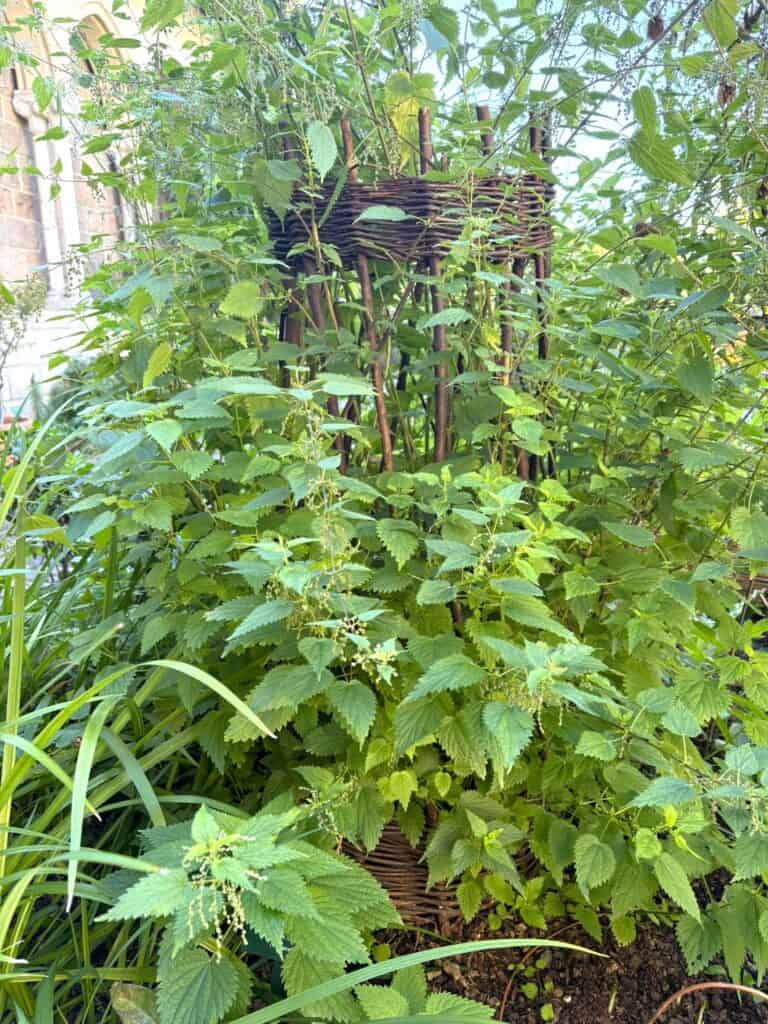
The prize of the day? This garden marker prompting a desire to return in spring and see and smell mandrakes for ourselves! Though poisonous, these odd fruits are mentioned in Song of Songs and in the complicated heritage of the twelve tribes of Israel (Genesis 30:14-16). Although the gardeners warn that in order to take in their notorious fragrance, we’ll have to get there before the squirrels!
The mandrakes send out their fragrance, and at our door is every delicacy, both new and old, that I have stored up for you, my beloved. Song of Songs 7:14 NIV
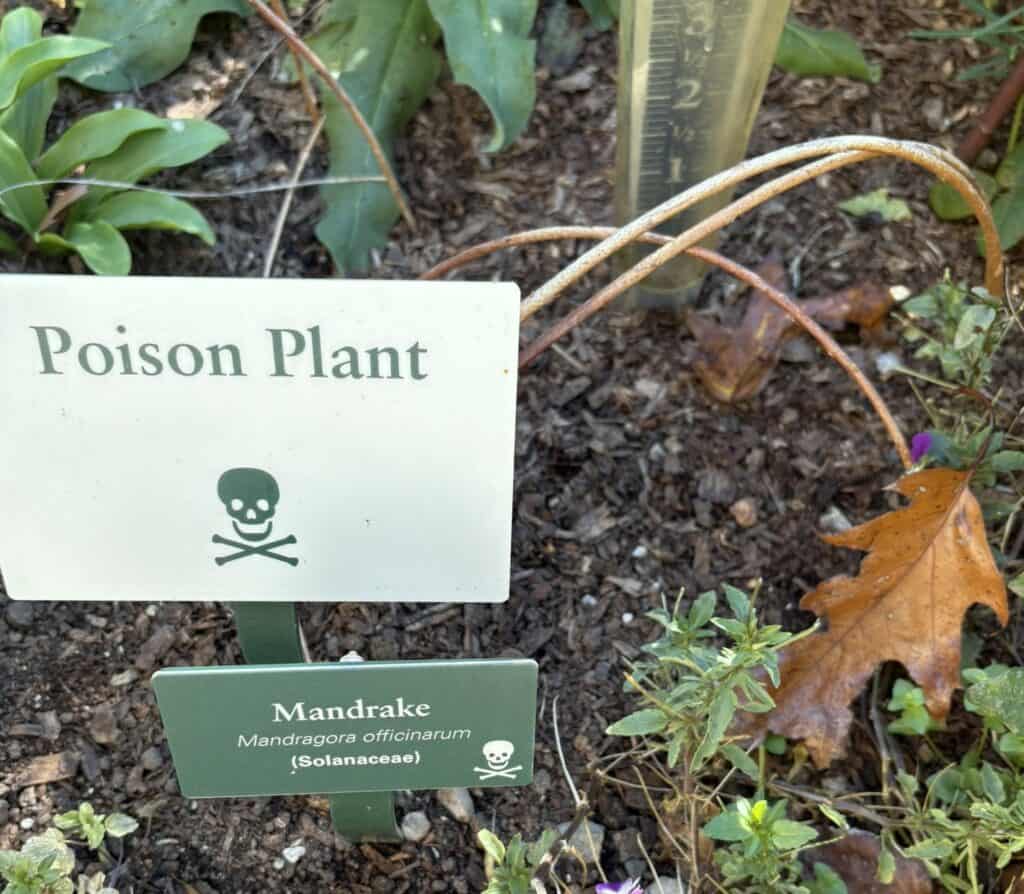

A peaceful line-up of potted olive trees graces the Western terrace of The Herb Garden, outlining the view to the Hudson River beond. Terra cotta pottery accentuates the brick paving of garden pathways.
Linger in this cloister to see fig and dwarf pomegranate (Deuteronomy 8:8), myrtle (Isaiah 41:19), and in summer months, potted cinnamon and frankincense (Song of Songs 4:14), carob tree (Luke 15:16) and more.
Your plants are an orchard of pomegranates with choice fruits, with henna and nard, nard and saffron, calamus and cinnamon, with every kind of incense tree, with myrrh and aloes and all the finest spices. Song of Songs 4:13-14 NIV
Tapestry Finale
Next door to the cache of herbal treasure is The Trie Cloister Garden. This special space is planted to reflect the prized tapestries hanging in the Tapestries Rooms, including the infamous Unicorn weavings, the darlings of The Met Cloisters Museum. Madonna lilies (1 Kings 7:22) and corn poppies (Isaiah 40:6) bloom in spring among the multitude of flowers planted to evoke the meadow-like imagery of the artwork. The contrasting spikey leaves of calamus make an appearance, too (Song of Songs 4:14).

Atrium Trio

One more garden space awaits! Wandering back under the arcades and through the galleries, venture to the Saint-Guilhem cloister in the northwest corner of the Museum, passing by architectural details, doorways, sculptured tombs, stained glass windows, along with objects of decorative arts. A potted myrtle marks the way.
Arriving in the interior cloister, take in diffused, uplifting light via skylights, harboring a lively collection of potted plants year-round. Lo and behold, I spied this trio of Biblical plants playing a perfect complement to stone carvings and monastery statuary adorning the space.

Date palm is surrounded by crocks of maidenhair fern (Song of Songs 1:16) and acanthus (Job 30:7), as the contrasting, ruffly textures of their foliage stands out against the smooth stonework.
After these things I saw, and lo, a great crowd, which no one could number, out of every nation and tribes and peoples and tongues, standing before the throne, and before the Lamb, clothed with white robes, and palm branches in their hands. Revelation 7:9 DARBY
Closing Prayer
O Father, thank You for the blessings You put in our lives. It is so good to be refreshed in gardens, Lord! You knew green space would soothe our souls—thank You for planting one, Lord God (Genesis 2:8)! Thank You for those have gone before us to secure treasures for us to behold and places for us to unfold our cares in Your gentle, loving Presence. Help us translate this physical fortress guarding art and garden beauty to a state of mind where the joys and wonder of Christ captivate our thoughts and shelter us from chaos and shaking (2 Corinthians 10:5, Isaiah 43:2-3, Daniel 3:23-27). We have everything we need, as Your Word decrees (2 Corinthians 9:8), to be nourished, sustained, and delighted because You reside in us with infinite resources. Thank You for bringing us remembrances of this reality every day, in petals and fragrant fruits, in rich views and lovely hues. More flowers, less worries, right, Jesus (Luke 12:22-27)? Heap blessings on the public gardens and museums that bring us back to You. In Jesus’ Name, Amen.
My soul quietly waits for the True God alone; my salvation comes from Him. He alone is my rock and my deliverance, my citadel high on the hill; I will not be shaken. Psalm 62:1-2 VOICE
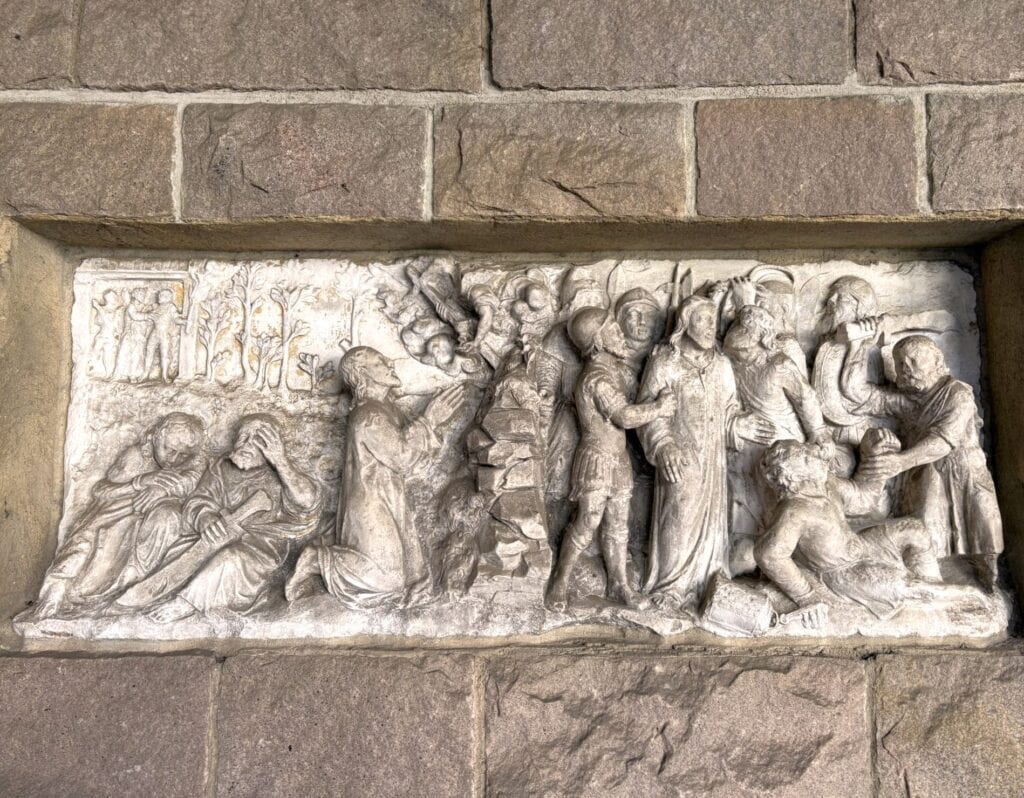


Many thanks to the horticultural staff at The Met Cloisters for touring and educating me on the plants and gardens. Your tending and keeping of the gardens is admirable, excellent, and lovely (Philippians 4:8)! Click here for complete 2025 Plant Lists for each garden space

Have you enjoyed reading My Father is the Gardener, Devotions in Botany and Gardening of the Bible? If not, order your copy now! Nearly every species featured in the book is planted at The Met Cloisters: Olive, Thistle, Crocus, Apple Tree, related Hyssops, Onions and Garlic, Wormwood, Flax, and Myrtle.

Visit the Garden in Delight Plant Guide to see more photos and learn more about plants of the Bible and growing Biblical plants in your home garden
Photo Credits: ©2025 Shelley S. Cramm
CJB notes Scripture quotations taken from the Complete Jewish Bible by David H. Stern. Copyright © 1998. All rights reserved. Used by permission of Messianic Jewish Publishers, 6120 Day Long Lane, Clarksville, MD 21029. www.messianicjewish.net.
DARBY The Darby Bible was first published in 1890 by John Nelson Darby, an Anglo-Irish Bible teacher associated with the early years of the Plymouth Brethren. This Bible is in the public domain in the United States, accessed at www.biblegateway.com
NCB denotes Scripture taken from the SAINT JOSEPH NEW CATHOLIC BIBLE® Copyright © 2019 by Catholic Book Publishing Corp. Used with permission. All rights reserved.
NIRV denotes Scripture quotations taken from the Holy Bible, New International Reader’s Version®, NIrV®,Copyright © 1995, 1996, 1998, 2014 by Biblica, Inc.® Used by permission of Zondervan. All rights reserved worldwide. www.zondervan.com The “NIrV” and “New International Reader’s Version” are trademarks registered in the United States Patent and Trademark Office by Biblica, Inc.®
NIV denotes Scripture quotations taken from the Holy Bible, New International Version®, NIV®. Copyright © 1973, 1978, 1984, 2011 by Biblica, Inc.® Used by permission of Zondervan. All rights reserved worldwide. www.zondervan.com The “NIV” and “New International Version” are trademarks registered in the United States Patent and Trademark Office by Biblica, Inc
VOICE denotes Scripture quotations taken from The Voice™. Copyright © 2012 by Ecclesia Bible Society. Used by permission. All rights reserved.

